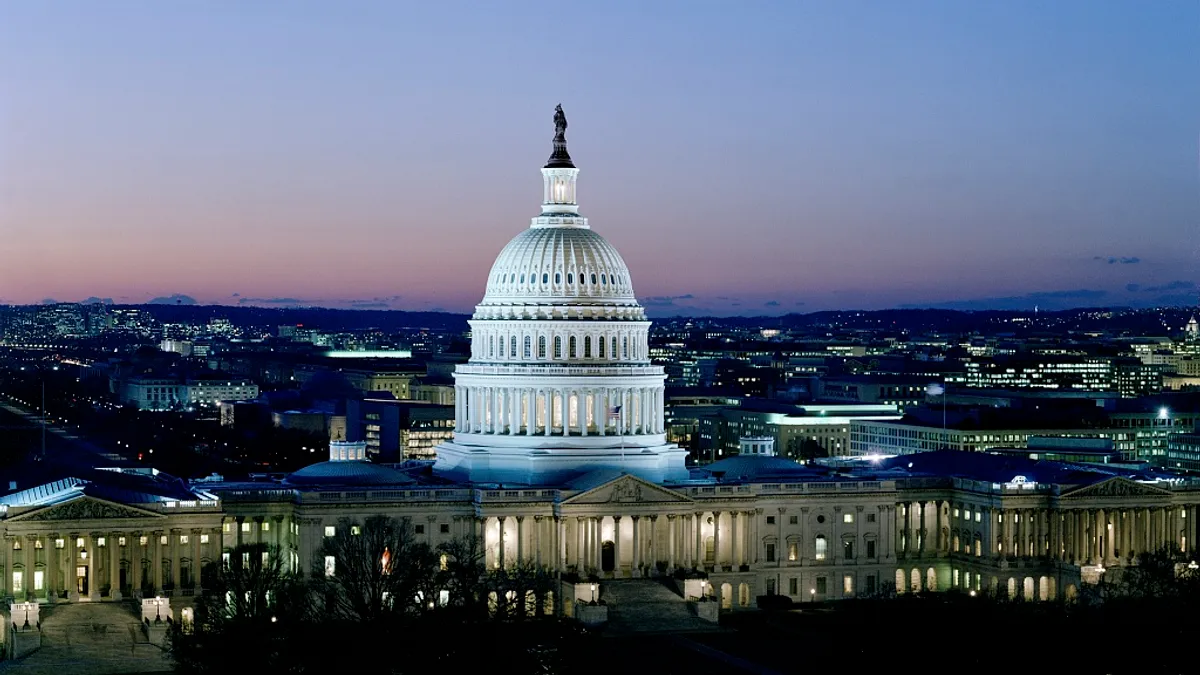Dive Brief:
- Energy storage industry leaders expressed support for a trio of new bills filed in Congress at an event on Capitol Hill Wednesday, saying they would help support battery deployment and integration into utility planning.
- SB 1851, introduced on Monday by Sen. Al Franken (D-MN), would require the Department of Energy to establish an energy storage research and demonstration program. SB 1875, from Ron Wyden (D-OR), would aim to increase the flexibility of the U.S. power grid.
- SB 1868, the only bill with bipartisan support so far, would provide investment tax credits for energy storage. It was introduced by Sens. Martin Heinrich (D-NM) and Dean Heller (R-NV).
Dive Insight:
Senators rushed to file a slate of energy storage bills in recent days ahead of hearings on the subject scheduled for next week.
On Tuesday, the House Energy & Commerce Committee will question energy industry leaders on reliability and resilience. At the same time, the Senate Committee on Energy and Natural Resources will hold a hearing specifically on energy storage.
Those events could bring attention to the new legislation aimed at boosting federal support for the emerging technology. At a discussion hosted by the Advanced Energy Storage Caucus on Wednesday, industry leaders said they hope to cast energy storage as a resource that "helps everyone," aiming to avoid the partisan divides that characterize support for renewables or fossil fuels on Capitol Hill.
"Energy storage as infrastructure is enough of a bipartisan topic," Ted Ko, director of policy at Stem, said about the Franken bill, which would fund storage R&D for grid resilience. "There's a dozen different critical infrastructures in the U.S. and energy is probably the one the others all depend on, so investing in R&D for that is I think a bipartisan issue that should give that legislation a little more legs."
Provisions for DOE demonstration projects and technical assistance on storage could help utilities integrate the new technology into their long-term generation planning, said Jason Burwen, policy and advocacy director at the Energy Storage Association.
"There's a recognition of putting storage into the planning processes of utilities, particularly of smaller utilities and munis and co-ops that may not have human capital and may be resource constrained," he said. "That's going to be transformative for those folks to figure out how does this cost-benefit work out ... how do we value the resilience aspects and then how do we make this make sense not just for a one-off procurement but part of a long term resource plan?"
Extending the investment tax credit (ITC) for energy storage could provide more immediate benefits, Ko said, making battery storage economic in a number of new states.
"We're in seven different states right now and there's a whole next tier of states which we'd love to be deploying in and serving customers," he said.
Stem has had to turn down opportunities to deploy batteries for some of its large enterprise customers, Ko added, but an ITC could change the calculation.
"Some of our large enterprise customers will, say, have an installation of our battery system in California and say 'can you do this in our other building in our other state?' and we'll say the economics don't quite work in that state yet," Ko said. "Something like an ITC at the same 30% level would right away put a whole bunch more states into play."













